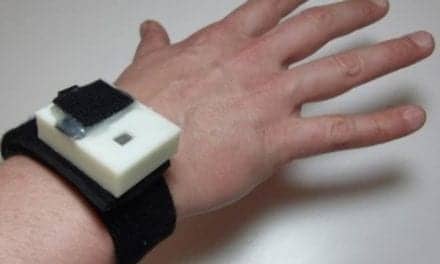
While our profession has grown over the last 50 years, it is about to become significantly more exciting as new areas of practice will emerge once the “2015 and Beyond” objectives are implemented. The collaborative “2015 and Beyond” project sponsored by the American Association for Respiratory Care with input from the major stakeholders in respiratory care developed and released the future competencies expected of entry-level practitioners. While all of the new competencies are too numerous to mention, one of the major sections on disease management includes addressing patients from the physical, nutritional, psychosocial, emotional, spiritual, and environmental perspective as a more complete disease management approach.1
According to the “Competency Area II: Disease Management” in the May 2010 article published in Respiratory Care,1 the following seven competencies are needed by entry level practitioners: “1) Understand the etiology, anatomy, pathophysiology, diagnosis, and treatment of cardiopulmonary diseases (eg, asthma, chronic obstructive pulmonary disease) and comorbidities; 2) Communicate and educate to empower and engage patients; 3) Provide psychosocial, emotional, physical, and spiritual whole person-focused care; 4) Education on nutrition, exercise, and wellness; 5) Environmental assessment and modification; 6) Apply evidence-based medicine, protocols, and clinical practice guidelines; and 7) Implement and integrate appropriate patient-education materials and tools.”
These are only a few from a very long list of competencies that reflect The Joint Commission, Institute for Family-Centered Care, American Hospital Association, and Institute of Medicine key guidelines for health care delivery for the future.2-5 According to the National Institute of Whole Health (NIWH), these guidelines recommend placing patients at the center of their health care decision-making and treating the patient as a whole person using evidence-based health education for prevention and disease management. In addition, Medicaid/Medicare initiatives—currently voluntary but soon to be mandatory—include patient education, prevention of disease states, and “pay for performance” reimbursement guidelines for medical practices. Pay for performance reimbursements are based on a physician’s documentation of patient education methods and disease prevention.5,6
The current education model for respiratory therapists does not adequately apply a holistic, whole-person care model needed by our profession in 2015, so we need to ask: What form will this new model take? What opportunities will it present to our profession? How will we move therapists to the new model? These questions can be addressed through “whole health coaching™ or whole health education™,7 exciting models that can help us move COPD and asthma education to the next level while expanding into management of the associated comorbidities.
It is important to note that therapists can currently be employed as health coaches to work with COPD and asthma patients. Our employability in this area is limited, however, since we are trained specifically in respiratory care. As a result, nurses are often employed in these roles due to their broader level of education in disease management. Since our current education model does not address patient care through such a comprehensive model, the process of transitioning therapists to this new model will require a competency-based training program that requires more than a review course and a test. It will require at least 6 to 12 months of training through an accredited program with testing and a practical application internship. It could be part of a BS program or a postgraduate AAS certification program. This training will possibly open up greater opportunities for working in physician offices, community-based health education programs, outpatient clinics, and rehabilitation centers with the possibility of reimbursement for our services.
Health coaching is unlike our current “assess and treat” model for asthma or COPD management. Instead, patients become active participants in their own care, as the education component within the health coach model is driven by the patient. This patient-centered approach is the new mantra among leading health care organizations,2-5 but it is more than just an idea on paper. The actual treatment modalities would follow our current standards, but in this model we would also address the comorbidity issues with a specific educational plan as well.
While we may not actually treat the comorbidities, we would discuss the relationship to their current condition. If necessary, we would act as the liaison between the patient and physician to make the necessary changes in the treatment plan, with the goal being to empower patients to take charge of their own health care. Patient empowerment is at the heart of patient-centered health coaching, which begins with a detailed history using specific questions addressing the aspects outlined in the Respiratory Care article. In the Table, sample questions from the NIWH externship manual7 are provided to give the reader an idea of the focus. The questions in the Table are only a sampling of the questions to be asked during the interview. They are very open-ended so as to elicit as much information from the patient as possible and are designed to engage the patient in the conversation, so follow-up questions are frequently included as well. The following case study illustrates how this process unfolds. The setting could be an office, rehabilitation center, or home, but this is a real case using the full battery of questions provided by the NIWH.
Case Study
A 38-year-old female client was diagnosed with asthma when she was 13. At present, her asthma is not well controlled despite the fact that she has been prescribed with appropriate short-acting (albuterol) and long-acting (montelukast) medications; however, she admits to being noncompliant with her medications, since they are so expensive. She feels that they make her better, but she can only afford her short-acting medication. She denies any other health issues at this time.
She had an eventful childhood—she describes it as traumatic, with her mother addicted to drugs. She left her mother and was raised by her paternal grandparents. Her asthma started about the time she moved in with her grandparents, but it improved over the years as her life became more emotionally stable. She still notices that her asthma worsens during allergy season, during the winter months, and after exercising.
She enjoys her job as a special needs instructor for a local community college. She feels she has a handle on stress, but dealing with special needs adults in the learning environment can be overwhelming. She does not feel well rested, indicating that she is not sleeping well.
She understands the basic need to eat correctly and exercise; however, she does not seem to have the time to exercise as often as she should. In addition, she is cutting back on groceries to make ends meet and she feels that eating healthy is more expensive, so she often fixes meals the cheapest way she can afford. She indicates a desire to improve her eating as well as her family’s, but she needed suggestions to accomplish this task.
She would also like to improve her quality of sleep, since her asthma worsens with less rest. She feels emotionally and spiritually sound through daily prayer, regular church attendance, and choir participation. While she believes her emotional-spiritual balance is “in check,” she feels she needs more work on stress-related issues.
Client Recommendations
Client discussions revolved around each of the issues she brought to the table. It was discovered that she had previously been treated for hypertension, depression, and insomnia despite her initial denial. Under no circumstances was the client ever diagnosed or prescribed a particular plan of action. She was encouraged to speak with her physician before making any changes. Any recommendations made were aligned with our current scope of practice, but they also encompassed the scope of practice of the certified whole health educator covering four aspects identified in the Table. Using the latest evidence-based research as it related to her condition as well as comorbidities identified during the process, an educational plan was developed.
- Physical. After a meeting with the client, her physician made some basic recommendations, which included monitoring daily peak flows, taking long-term medication as prescribed, using short-acting medication as needed, pretreating with short-acting beta agonists (SABA) prior to exercise, and maintaining an asthma journal. In addition to her asthma control, weight reduction to improve her overall health was the client’s main goal to decrease the risk of obesity, diabetes, and cardiovascular disease, since she had a family history of these conditions. During the course of the 8 weeks, she reported a loss of 16 pounds with improved asthma control. Her goal was to lose an additional 20 pounds over the next 10 weeks.
To accomplish this goal, the primary recommendation included adding resistance exercise 3 times a week before her aerobics session, which she currently included in her daily regimen. Since exercise was an identified asthma trigger, a recommendation was made for her to take her short-acting medication based on peak flow measurement. If she determined that her asthma control level was in the yellow or red zone, she would take her SABA.
- Emotional. Her overall disposition was remarkable considering her traumatic childhood experience. She recognized that her asthma emerged when her drug-addicted mother left her to fend for herself, and she made the choice to leave her mother and live with her parental grandparents. It became apparent to her during the counseling that stress was a factor in her asthma control, which was linked to her emotional and spiritual state.
Reducing emotional stress through daily exercise was discussed as a way to discharge the emotional energy of the day. She also agreed to relax more often during the day by using breathing techniques taught during the counseling sessions, and she was encouraged to set a goal of at least 5 minutes 3 times a day to practice deep breathing for relaxation. To help her sleep more soundly, recommendations included avoiding stimulating activities, such as TV or exercise, 1 hour prior to bed; sleeping without extraneous light in the room; and using the breathing techniques 5 minutes prior to falling asleep.
Additional stressors identified included her eating habits at work, which often disrupted her ability to have a satisfying lunch. She would refrain from lunch, since it often resulted in stomach upset. When she did eat lunch, she habitually ate at her desk or in the cafeteria with her students; therefore, we recommended that she spend at least 30 minutes of her lunch hour away from her desk and students for a period of relaxation. She agreed to eat at a designated location where she felt comfortable. This helped her to distance herself from distractions and stresses that could disrupt her digestion.
Nutritional. She understood the consequences of a poor diet, but was convinced that it was too expensive to eat healthily. Since she was not being treated for any of her comorbidities, the goal was to improve her overall nutritional intake to optimize her asthma control as well as address her additional weight loss goals. Her low carbohydrate diet approach was no longer working, so a whole food diet was discussed, but consultation with a nutritionist was also considered.
The first step in the process was to recommend a 2-week diary of daily intake to identify the specific areas to improve. After 2 weeks, she agreed to eat six small meals a day, avoid gluten and milk, include more organic fruits and vegetable, reduce overall meat consumption, increase omega-3 fatty acids, and incorporate various anti-inflammatory herbs and foods. The primary goal for the food choices was to reduce potential food allergies, avoid hidden toxins, increase complex carbohydrate consumption and fiber intake, increase essential fatty acid intake, and maintain adequate protein intake.
Spiritual. While she was deeply involved in church already, she could use the meditative breathing combined with her daily prayer rituals to enhance her spiritual experience, which could be combined with gardening and nature walks as well. Since church attendance and spiritual activities such as prayer have a positive effect on emotional stability, she was encouraged to continue her participation, especially with the choir, since singing is also beneficial for breath control.
Case Study Outcome
This process took 7 hours of actual time, meeting an average of 1 to 1.5 hours each week. While labor intensive, it met the criteria for individualizing a plan for each patient or client, so it was not the typical asthma education program. It encompassed many aspects of the patient’s life beyond what we typically delve into on a daily basis, and it is aligned with the 2015 objectives for disease management. It also showed the interconnected nature of each of these processes. It is often difficult to separate the events, so we must look at the whole patient, which is exactly the point of patient-centered care. Of course, the proof will be in the reported outcomes.
In this case, the follow-up after 1 and 2 years revealed no exacerbations, no limitations on activity, and no clinic visits. Therefore, the client has been stepped down to the intermittent level using SABA as needed, but she has not needed the medication in the last year. Her weight remains stable, and she no longer has sleep issues. The patient states that she feels “very empowered.” In fact, her last doctor’s visit revealed that her blood pressure, body weight, body mass index, blood sugar, and cholesterol were all normal. While this is only one case, it was promising to see that addressing the client as a whole person proved beneficial for the longer term.
Conclusion
It remains to be seen how health education or coaching will work on a larger scale in respiratory care. While there are several pilot programs being conducted to test the waters, we should not wait for the results. For the respiratory therapist, the opportunities could be limitless in this arena as we offer our expertise to this growing field of health coaching and education. For the respiratory practice manager, it will open doors for greater practice strategies and revenue streams. For the profession, it can elevate us as a more influential partner in the health care market. The future of respiratory care is now, and health coaching is something we should consider as our profession moves forward. We should embrace this tide of opportunity to advance our profession to the next level, since 2015 will be here before we know it. The question is: Will you be ready?
Bill Croft, PhD, RRT, RCP, WHE, DCAE, is Health Sciences Department chair, program director, and professor of respiratory therapy, Sandhills Community College, Pinehurst, NC.
Disclosure: The author is an academic advisor for the National Institute of Whole Health (NIWH) educator program located in Wellesley Hills, Mass. While not representing the NIWH, the author is using the trademarked model of whole health to present this article based on his adaptation. In addition, the author is also the administrator of this program offered at Sandhills Community College.
References
- Barnes TA, Gale DD, Kacmarek RM, Kageler WV. Competencies needed by graduate respiratory therapists in 2015 and beyond. Respir Care. 2010;55:601-16.
- The Joint Commission. Advancing Effective Communication, Cultural Competence, and Patient- and Family-Centered Care: A Roadmap for Hospitals. 2010. Available at: www.jointcommission.org/Advancing_Effective_Communication. Accessed March 14, 2011.
- Yong P, Olsen L. The Healthcare Imperative: lowering costs and improving outcomes – workshop series summary. Institute of Medicine. Available at: www.nap.edu/catalog.php?record_id=12750#toc. Accessed March 14, 2011.
- Adler N, Page A, National Institute of Medicine. Cancer care for the whole patient: meeting psychosocial health needs. Available at: www.nap.edu/catalog.php?record_id=11993. Accessed March 14, 2011.
- Chao S, Anderson K, Hernandez L; Institute of Medicine. Toward health equity and patient-centeredness: integrating health literacy, disparities reduction, and quality improvement: workshop summary. Available at: www.worldcat.org/search?qt=worldcat_org_all&q=toward+health+equity+and+patient-centeredness. Accessed March 14, 2011.
- Donadio G. The National Institute of Whole Health. About NIWH. 2011. Available at: www.wholehealtheducation.com/about-niwh. Accessed March 14, 2011.
- Donadio G, Kantor J. The National Institute of Whole Health: Externship Manual. The National Institute of Whole Health; 2008. Available at: classroom.wholepersonhealthcare.org. Accessed March 14, 2011.










